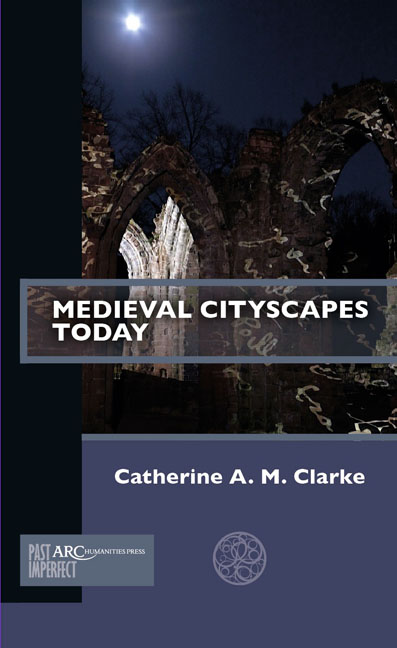Rouen: Introduction
Published online by Cambridge University Press: 20 November 2020
Summary
I’m standing high on the Cathedral of Notre Dame, looking down over the medieval cityscape of Rouen, Normandy. It is late May, 1431: trees blossom in gardens, the fields across the Seine are lush and green, ships cluster either side of the Pont Mathilde, where cargo is hauled up the riverbanks. I can see the Abbey of Saint Ouen, caged in wooden scaffolding, where the tower and nave are under construction. To the north, I see the squat, round towers of Rouen Castle, with the crenellations of the city wall behind them; towards the west, near the river, the English are hard at work on their new fortress—later to be known as the Vieux Palais. Smoke drifts up from handsome, four-storey timbered houses in the Rue Grand-Pont, where a small crowd has gathered to watch a group of masked entertainers perform in the street. I can hear the chatter of children playing in the Cour d’Albane cloister below me, bells chiming in the distance, the ring of masons’ tools as they work the new Gothic arches at the top of the Saint Romain tower.
Taking in this panoramic view of the city, I recall the startling description of Rouen in the twelfth-century Ecclesiasti-cal History of Orderic Vitalis. After a local revolt against Robert, Duke of Normandy, in 1090, the rebel leader Conan is taken to the top of the ducal tower by Robert's brother Henry (the future Henry I of England), to be shown the wealth and beauty of the city which he has coveted.
Considera Conane, quam pulchram tibi conatus es subicere. En ad meridiem delectabile parcum patet oculis tuis; et saltuosa regio siluestribus abundans feris. Ecce Sequana piscosum flumen Rotomagensem murum allambit; nauesque pluribus mercimoniis refertas huc cotidie deuehit. En ex alia parte ciuitas populosa minibus sacrisque templis et urbanis edibus speciose; cui iure a priscis temporibus subiacet Normannia tota.
Regard, Conan, the beauty of the country you tried to subordinate. See to the south before your eyes lies a delightful park, wooded and well-stocked with beasts of the chase. See how the river Seine, full of fishes, laps the wall of Rouen and daily brings in ships laden with merchandise of many kinds. See on the other side the fair and populous city, with its ramparts and churches and town buildings, which has rightly been the capital of Normandy from the earliest days.
- Type
- Chapter
- Information
- Medieval Cityscapes Today , pp. 1 - 18Publisher: Amsterdam University PressPrint publication year: 2019



